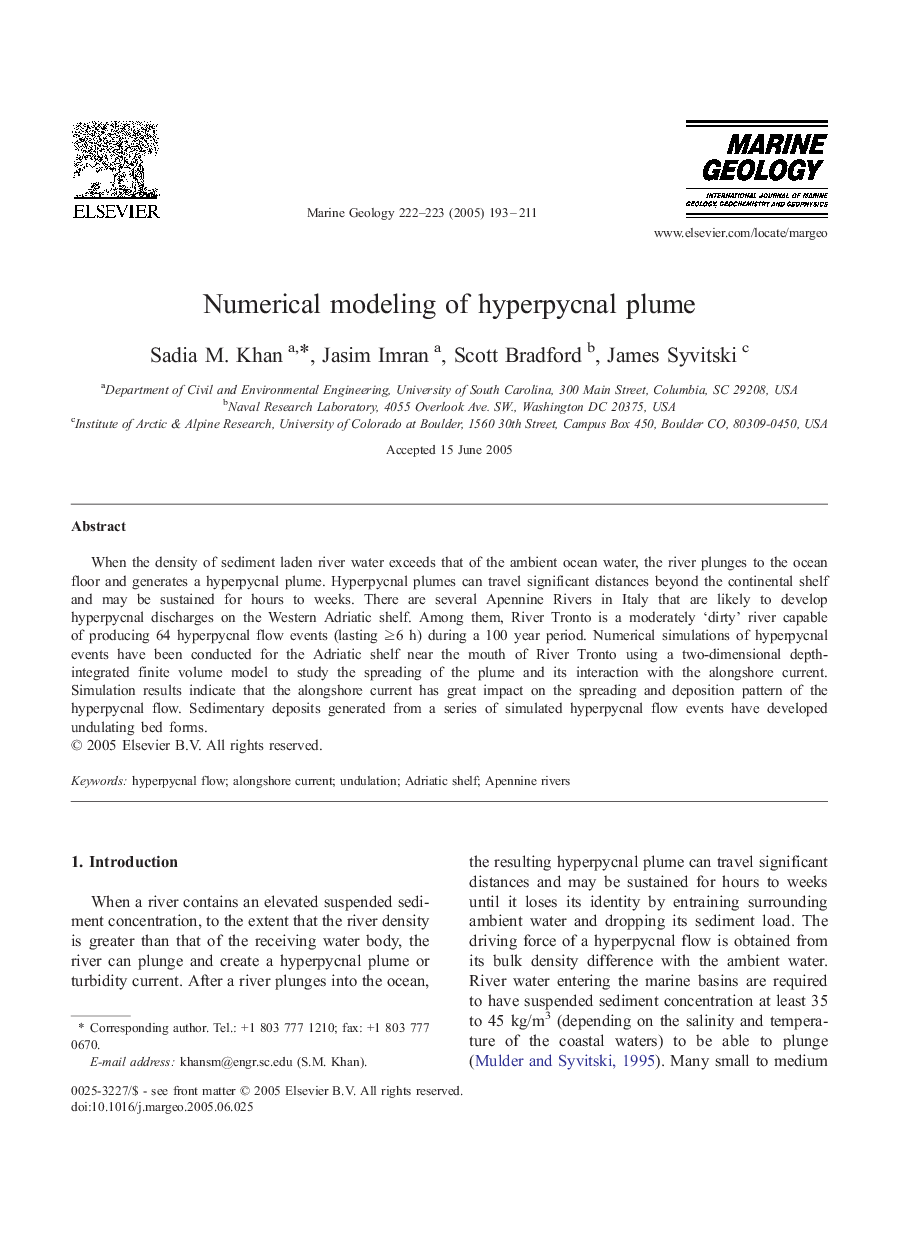| Article ID | Journal | Published Year | Pages | File Type |
|---|---|---|---|---|
| 9532463 | Marine Geology | 2005 | 19 Pages |
Abstract
When the density of sediment laden river water exceeds that of the ambient ocean water, the river plunges to the ocean floor and generates a hyperpycnal plume. Hyperpycnal plumes can travel significant distances beyond the continental shelf and may be sustained for hours to weeks. There are several Apennine Rivers in Italy that are likely to develop hyperpycnal discharges on the Western Adriatic shelf. Among them, River Tronto is a moderately 'dirty' river capable of producing 64 hyperpycnal flow events (lasting ⩾ 6 h) during a 100 year period. Numerical simulations of hyperpycnal events have been conducted for the Adriatic shelf near the mouth of River Tronto using a two-dimensional depth-integrated finite volume model to study the spreading of the plume and its interaction with the alongshore current. Simulation results indicate that the alongshore current has great impact on the spreading and deposition pattern of the hyperpycnal flow. Sedimentary deposits generated from a series of simulated hyperpycnal flow events have developed undulating bed forms.
Keywords
Related Topics
Physical Sciences and Engineering
Earth and Planetary Sciences
Geochemistry and Petrology
Authors
Sadia M. Khan, Jasim Imran, Scott Bradford, James Syvitski,
